


 Virani
Diamonds
Virani
Diamonds 
 Colour
Colour 
 Clarity
Clarity 
 Cut
Cut 
 Shapes
Shapes 
 Carat
Weight
Carat
Weight 
 Certification
Certification 
 Different
Aspects of Diamonds
Different
Aspects of Diamonds 
 Diamond
Formation
Diamond
Formation 
 History
of Diamonds
History
of Diamonds 
 Diamond
Capitals of the World
Diamond
Capitals of the World 
 Famous
Diamonds
Famous
Diamonds
Similar to every single piece of Virani jewellery that has its their own unique story to tell form the order placement stage to being fully certified, every single conflict free diamond that is studded in your precious Virani jewellery starts its journey at the very beginning as a rough stone at our in-house diamond cutting and polishing facility that has the lineage of 50 years of industry experience and expertise accumulated over three generations.
Compared to a rough diamond that take millions of years to form and come up to the surface of the earth, cutting and polishing a rough diamond typically takes up to a few weeks to a few months.
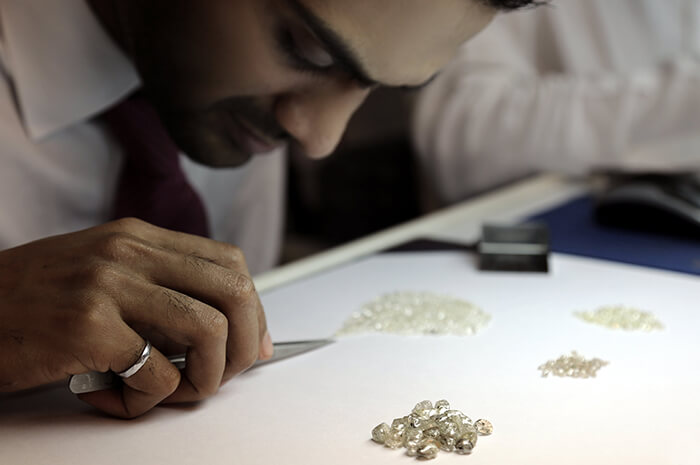
The very first step after procuring a parcel of conflict free rough diamonds is assortment. Each individual diamond is carefully reviewed and sorted according to its shape, size, colour and clarity before it goes on to the planning department. After assortment, every single diamond is placed in an individual packet with a unique barcode which is scanned along every single process from rough to polish to keep track of the progress.
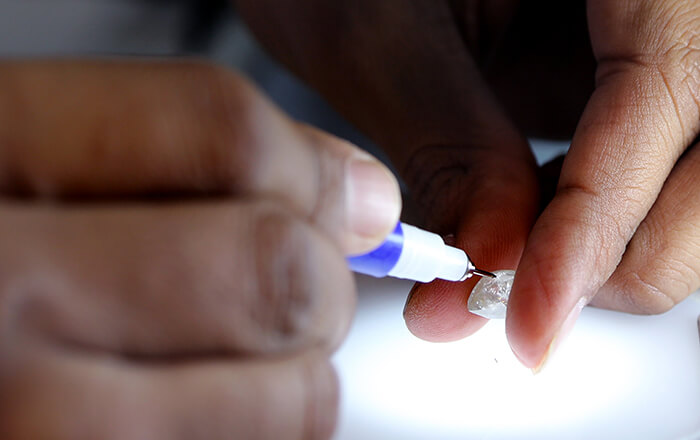
Each diamond is then analysed using the state of the art technology that maps all the inclusion inside as well as on the surface of the diamond. The goal here is to choose one or more highest valued polished diamonds by keeping in mind the 4Cs of diamonds: Cut, Colour, Clarity and Carat Weight. During this stage, the cutting planes, angles, heights, width and angles of every single facets are decided which would decide how the light will perform inside a diamond.

After a rough diamond is carefully planned, it is marked using an automated laser beam. The marked stones move on to the laser sawing department where a high powered laser beam cuts a big rough diamond into desired smaller pieces.
From there the diamond is sent to a blocker where the diamond gets is basic outer shape. Blocking is done using either a laser bruiting marine or mechanical auto blocking arms.

After the stone is blocked and gets its outer shape, it then goes to a brillianteer for final faceting. The cutter sets in a dop and gently paces it on a rotating wheel made of diamond power since only a diamond can cut and polish another diamond.
Facet after facet, the skilled polisher, brings the rough diamond to life.
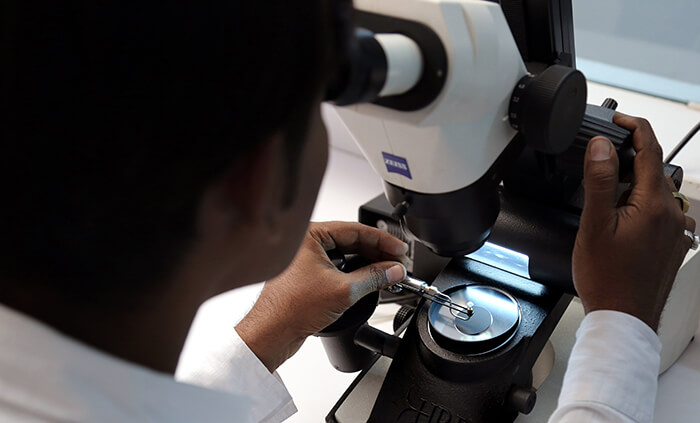
Once polished, every single facet of each individual diamond is carefully revived by both a highly accurate laser scanner as well as by a trained gemmologist. Any diamond that doesn’t meet our strict quality control standards is sent back for re-polishing. The diamonds are then sent out to some of the most respected diamond grading laboratories worldwide such as GIA and IGI for certification before being studded in your precious Virani diamond jewellery.
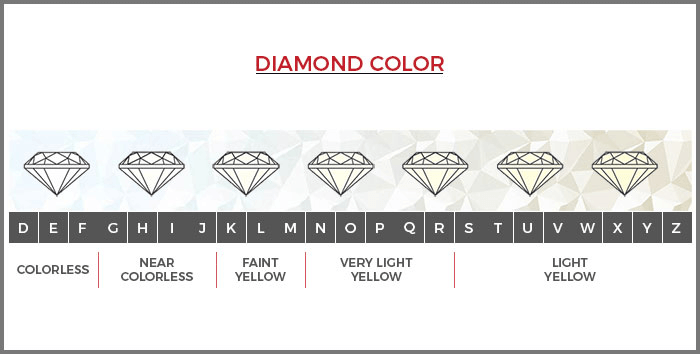
It was only in the last century that a globally acceptable grading standard was developed.
This standard is known as the "4Cs" system of grading diamonds and is based on "Colour", "Clarity", "Cut" and "Carat Weight" of a diamond. Among these, the first two – Colour and Clarity are natural occurrences in diamonds and we rarely have any control over these. The other two – Cut and Carat Weight are defined by the manner in which a diamond is cut and polished.
Interesting Trivia: When we talk about the colour of a diamond, we actually refer to the lack of colour in that particular diamond. The purest diamonds that contain no other elements than carbon are colourless. The colourless diamonds are the rarest. Most diamonds have some form of impurity elements other than carbon inside of them which absorb certain wavelengths of light causing diamonds to appear yellow, blue or other wide spectrum of colours.
The whiter or more colourless the diamond, the higher is its value. As per the grading system and chart defined by the Gemmological Institute of America, diamond colours range from D to Z – D being the purest, completely colourless diamond. Colour inclusions in a diamond then increase in a sliding scale all the way down to Z.
Diamonds that fetch the highest value are generally graded D to F in colour. However, these are rare to find and extremely costly to own. Then there are grades G to I, wherein diamonds are visually colourless to the naked and untrained eye. As you go down the grade scale, say J to M, tinges and hints of yellow or brown colour start creeping into the diamonds.
Hard Fact: Grading a diamond’s colour is very difficult using naked eye. Most labs have a set of “master stones” that define the highest and lowest limits of acceptable colour or lack of it within a stone. A trained gemmologist keeps placing the diamond to be graded right next to different master stones and compares their shades until the diamond’s shade matches the colour of one of the master stones. The diamond gets the colour grade of its closest matching master stone.
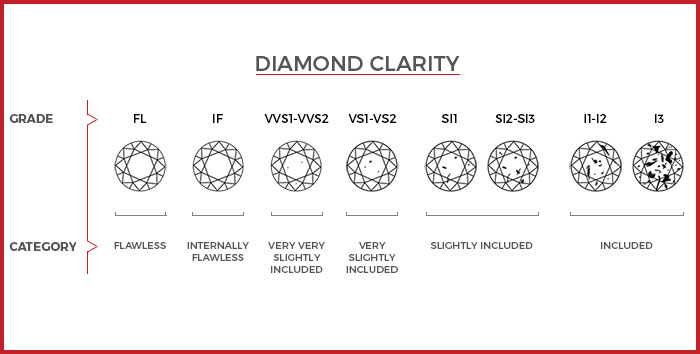
Similar to its Colour, the Clarity of a diamond is also a significant factor affecting its value. To understand a diamond’s clarity, let us first understand what exactly we mean when we refer to the term "Clarity". Natural diamonds are formed when carbon molecules undergo extreme temperature and pressure hundreds of kilometres underneath the surface of the earth. The chances of forming a perfect crystal under natural uncontrolled environment, which requires stable growth condition for a long period of time, are extremely rare. Therefore, flawless diamonds are very rare to form and very expensive to buy. Majority of the diamonds carry one or more flaws in the form of other elements or even carbon impurities present in the crystal structure.
Inclusions are always natural – air bubbles, cracks, other materials, microscopic dust particles, and the like. Blemishes, on the other hand, can be natural or man-made. Blemishes might be a scratch on the surface, a minor chip, or anything else that mars the surface. Just like the diamond colour, the lesser or insignificant the inclusion, the higher the price of the diamond.
Interesting Trivia: The world’s largest gem-quality cut diamond is a D colour, internally flawless diamond – the Cullinan I or the Great Star of Africa diamond, which now adorns the Royal Scepter in the Crown Jewels of the British Empire.
The diamond clarity is defined based on the number, size, colour, location, orientation and ultimately the visibility of inclusions present in the diamond.
Hard Fact: 10 X magnifications is the standard magnification used for grading a diamond's clarity. If inclusions or blemishes present in a diamond cannot be identified under 10 X magnification by a trained gemmologist, they do not count towards deciding the clarity grade of a diamond.

There are two main elements that are taken into consideration when it comes to grading the Cut of a diamond. The first one refers to its outer shape and the second one refers to how well the diamond is cut into that particular shape.
Interesting Trivia: Most people, outside the diamond industry, believe that the Cut of a diamond refers to the shape of a diamond. However, a trained gemologist refers to specific cutting parameters that bring a particular shape to life with highest fire, brilliance and scintillation.
Based on classifications and nomenclatures followed by the diamond industry around the world, the Cut of a diamond is divided into five categories.
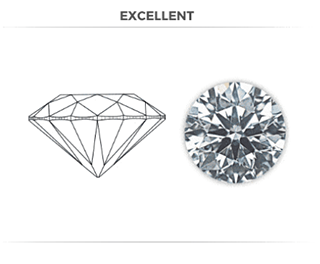
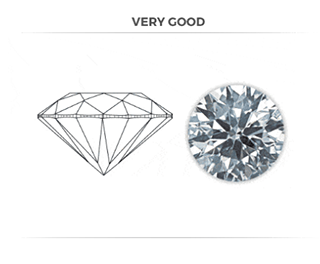

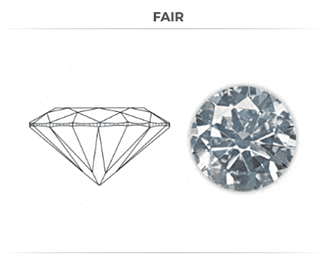
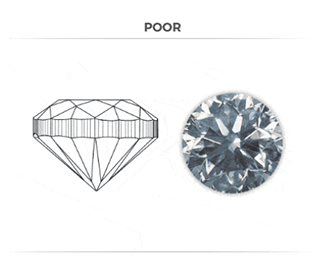
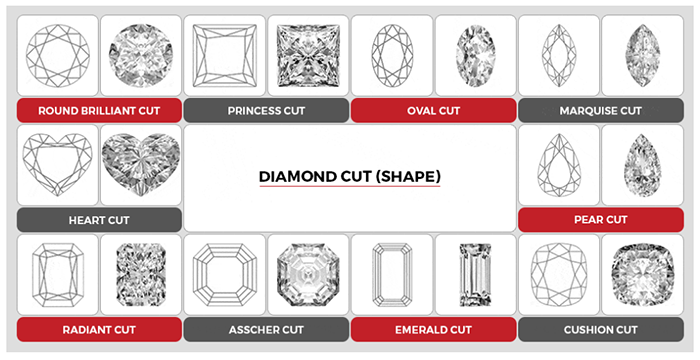
A rough diamond goes through a series of planning and preparation stages prior to being cut and polished. Determining the shape or the Cut of a diamond depends on many factors. Some diamond cutters may choose to retain maximum weight and cut a diamond based on the geometric shape of a natural rough diamond. Some may desire a number of smaller diamonds with high clarity diamonds instead of a single big diamond containing many dark impurities inside. However, most diamond cutters choose a Diamond Cut that would balance both the weight retention and clarity characteristic and most importantly yield highest value.
The Cut of a diamond describes two features of a polished diamond. The first one refers to its outer shape and cutting parameters used to cut the diamond. And the second one refers to how smoothly and symmetrically the outer surface of the diamond is polished. Both the features are equally important to bring the rough diamond to life and to yield a polished diamond with highest brilliance, fire and scintillation.
Interesting Trivia: While there exist 10 different major shapes into which diamonds are cut and polished, the number of diamonds cut into round brilliant shape is more than double of all the other shapes put together. Nearly 75% of all diamonds produced are Round Brilliant cuts.
Diamonds can be cut into infinite number of shapes and sizes. Here is a brief list of ten of the most popular diamond cuts.

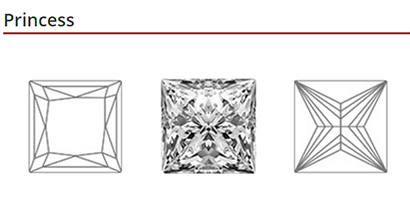
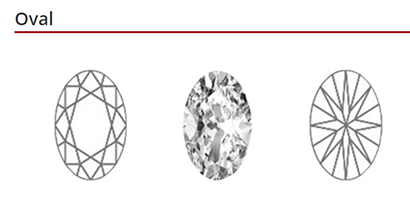
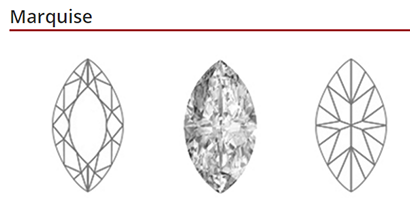

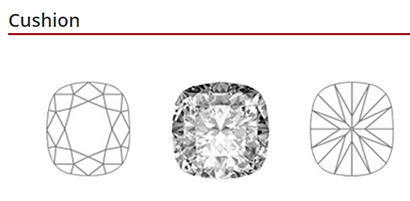
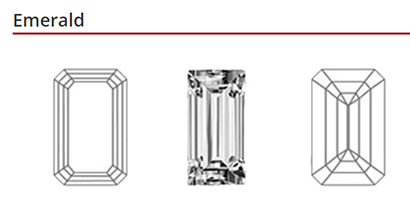
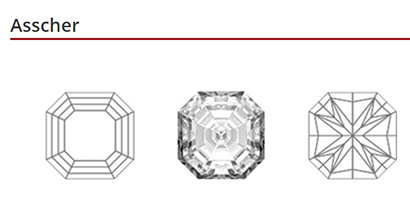
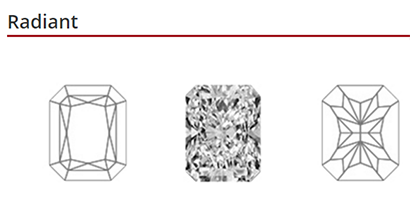

Hard Fact: The level of planning, working and re-working required to achieve a perfect cut is so complicated
that often, it takes years to fully and satisfactorily process a large diamond. For example, it took almost
four and half years for the
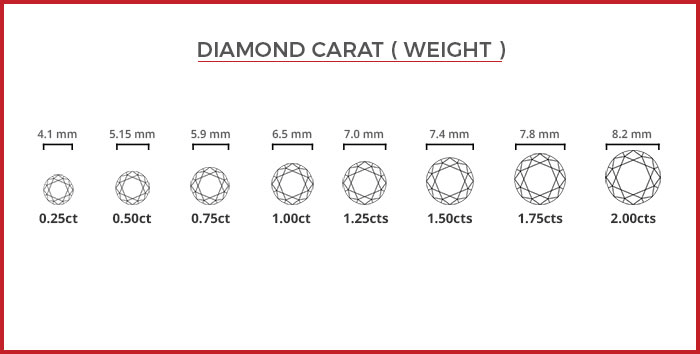
 Most people link the Carat Weight to the size of the diamond. However, Carat is a unit of measurement of weight
used to weigh a diamond. The actual size of the diamond is always measured in mm.
To understand carat weight properly, let us look at how it compares to normally units of weight.
1 Carat = 0.200 grams or 200 milligrams (yes, it’s that light).
Most people link the Carat Weight to the size of the diamond. However, Carat is a unit of measurement of weight
used to weigh a diamond. The actual size of the diamond is always measured in mm.
To understand carat weight properly, let us look at how it compares to normally units of weight.
1 Carat = 0.200 grams or 200 milligrams (yes, it’s that light).
It takes extremely high temperature and pressure for a diamond to be formed from carbon molecules. In fact, the
chances of a diamond being formed and successfully making it to the surface of the earth are much lower than
winning a lottery. Hundreds of kilometers underneath the surface of the earth, it is very unlikely that these
extreme conditions remain stable and favorable for a long period of time for the growth of a large diamond.
Therefore, it is very rare to find a large sized rough diamond.
No doubt, only a few monster-sized rough diamonds have been mined through history – the most famous being the 3104 carat Cullinan diamond. However, majority of the diamonds mined today are quite small in size. Here’s an interesting statistic – it requires close to one million diamonds to be mined before a one carat stone happens to be found.
Interesting Trivia: The word “Carat” comes from the ancient practice of using “Carob” seeds for measuring weight. The fact that these identical seeds were perfect in size and weight compared to one another made them ideal as a unit of measurement.
Due to this shortage of bigger diamonds, carat weight has always played a significant role in determining the price and the value of diamonds. The bigger the diamond, the rarer it is to be found. And hence the bigger the stone, the more expensive it is per carat. The price of a diamond per carat weight increases exponentially with size. For example, while a one-carat stone can fetch anywhere from $6,000 to $15,000, a sparkler of 3-4 carats could demand a price of more than $18,000 per carat depending on its color and clarity.
It is also interesting to note that as the carat weight of a diamond increases, the relative size does not increase in the same proportion. For example, the diameter of a one carat diamond is approximately 6.4 mm. However, the diameter of a two carat diamond is only 8.1 mm.
Hard Fact: Gold and diamonds, the two major components in precious jewellery, use Karat and Carat, respectively, as a unit of a measurement. Carat with a “C” applies to diamonds and it indicates the weight of the diamond. Karat, with a “K”, on the other hand, refers to the purity or fineness of gold.

A diamond’s certificate, also known, as a diamond grading report, is a review of the stone’s characteristics. An expert gemologist that describes key qualities of the diamond, which include clarity, cut, and colour and carat weight, prepares the document.

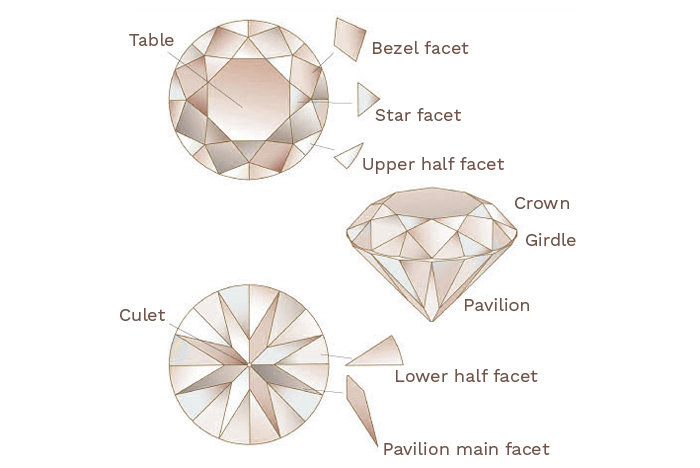
It takes both art and innovation to bring a rough diamond to life and make it shine with the best fire, brilliance and scintillation.
Interesting Trivia: A Round Brilliant Cut diamond has 57 facets. If the culet of a diamond is also faceted, then the diamond would have 58 facets. Anything more or less means the diamond is not cut ideally.
The above aspects give a diamond its shape and its allure. In addition to these, there are certain other important aspects that also need to be taken into consideration.
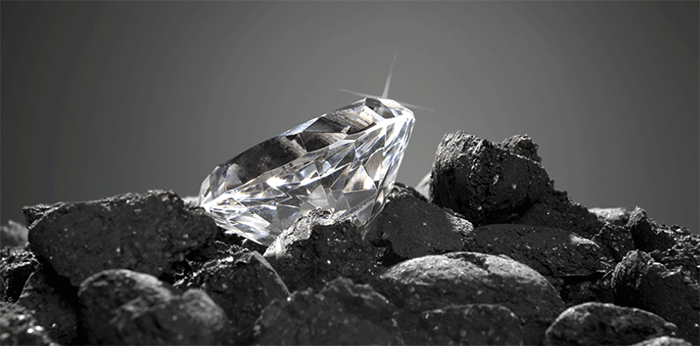
It takes ultra-high pressure, approximately 50 Kilo bars, and extreme temperature, in excess of 1000 degrees Celsius, to form a diamond. Such pressures and temperatures are only possible deep in the earth’s crust – somewhere between 140 and 190 kilometers. There would have to be some form of carbon available deep down there, but that would not necessarily be coal.
Interesting Trivia: Diamonds were formed deep in the earth’s crust somewhere between 600 million to 3.3 billion years ago. That’s means the youngest diamonds we hold in our hands today were formed way before the dinosaurs ruled the earth.
Actually, coal is rarely ever present that deep below the surface. Coal is usually found at just about 3.2 kilometers underneath the surface. Moreover, coal is formed from plant / vegetation sediments at much lower pressure and temperatures.
Luckily, that would not be required as the diamonds normally get pushed closer to the surface due to a special kind of volcanic eruptions or earthquakes. Now don’t go about thinking that every time there is a volcanic eruption, there will be diamonds spewed out of the earth for the picking. To the contrary, there is no recorded recent volcanic eruption that has brought diamonds to the surface.
That’s because the diamond bearing crust (or mantle as it is correctly known) is much deeper than most currently active volcanic tubes. In other words, diamond bearing regions of the earth came to have those diamonds hundreds of thousands of years ago when there were massive and deep crust volcanic activities thereabouts.
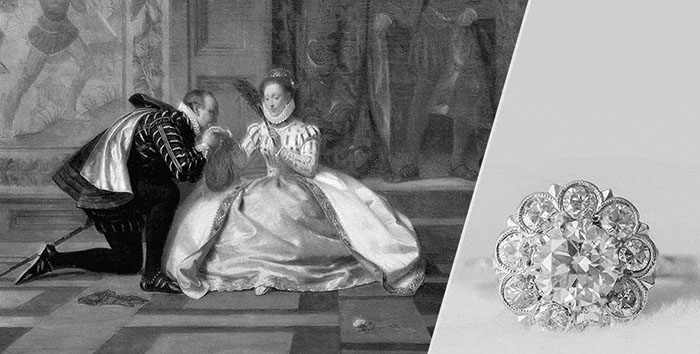
A long, long time ago, in a far forgotten land, a man stumbled upon a white stone that shone surprisingly and seemed to have a life and light of its own. Such was the beauty of the stone that the man fell instantly in love with it. It was love at first sight.
Thus began the love story of a man with diamonds. That love story started around 3000 years ago. The far forgotten land was some place in the Southern part of India (as per popular belief). And the man who found the first diamond… Well, no one really knows who found the first diamond. What is definitely known though is that since then men have done the most amazing and romantic things with these sparkling stones to celebrate their beauty.
Interesting Trivia: For nearly 500 years, diamonds were known only in India. The rest of the world had no idea that such an exquisite stone existed!
So who introduced diamonds to the rest of the world?
Some historical facts point the finger toward Alexander the Great of Macedonia. It is believed that he first took diamonds back to Europe with him when he returned to Greece after his conquest of India. That would mean diamonds travelled from India to Europe sometime around 327 BC. That’s even before Christ was born!
Maybe the ancient Indians knew about the value of diamonds and used them in jewellery… or maybe they did not. There’s no record. But what is historically known is that in the second century AD, a Hungarian queen had diamonds set on her new crown. Much later, in 1477 AD, the Archduke Maximilian of Austria, presented an engagement ring to his soon to be queen – Mary of Burgundy. The ring was set with diamonds and it started a trend of getting engaged with a diamond ring which continues till date.
Going back to the 13th century, cutting and polishing of natural diamonds was still an unknown process. No one knew how to cut diamonds until the late 13th century. It was only in 1375 that the Point Cut was created. Up until then, only the best naturally formed diamonds were used for jewellery or decorative purposes. The rest were discarded.
Fact: Until the 14th century, only best naturally formed diamonds were used for jewellery or decorative purposes; the rest were discarded since no one knew how to cut and polish the stones.
Increasingly thereafter, various new cuts were developed. The demand of diamonds as objects of desire and their use in jewellery grew substantially.
In the 18th century, India ran out of diamonds, but new supplies were discovered in Brazil. About a century and a half later, South Africa took over as the diamond producing capital of the world. It was South Africa that gave birth to the world’s largest diamond producing organization – the De Beers Corporation. As newer diamond deposits were discovered in various countries around the world, the reach of diamonds increased. What was once an object of desire and flaunted by only the rich and elite, started reaching the masses.
In the last couple of centuries, these stunningly brilliant stones have gone through many upheavals and changes, but their allure and attraction has remained unchanged.
If we pick up the map of the world and mark out the countries that contribute significantly to the global gems and jewellery trade, it would give us a very interesting mosaic. The four major continents – Asia, Africa, North America and Europe – play a unique role in different segments of the diamond pipeline.
The modern US$100 Billion gems and jewellery can be divided into four major parts.
Once mined, the rough diamonds enter the global diamond pipeline after passing “Kimberly Process Certification” process which assures that the rough diamonds are conflict free. Today, over 99% of all the rough diamonds mined across the globe go through Kimberly Process Certification process and are conflict-free. Mining companies sell rough diamonds to a few selected companies though long term contracts. Alternatively, some mining companies also sell their rough diamonds through monthly auctions and tenders.
In the 16th and 17th century diamonds were mined mainly from India and Brazil. However after 18th century Africa became one of the biggest contributors of the rough diamonds. Today, rough diamonds are mainly mined from Botswana, South Africa, Angola, Namibia, Australia, Russia, Canada and the Democratic Republic of Congo.
Interesting Trivia: Prior to Antwerp, it was Amsterdam that ruled the diamond trade in Europe. However, ease of doing business, friendlier laws, and better government support helped Antwerp grow quickly to become the world’s largest rough diamond trading center.
The Diamond Exchange District of Israel known as Ramat Gan is also a well-known center for diamond trading as well as diamond cutting and polishing. Last but not the least, Dubai, is also quickly becoming an important global rough diamond trading hub.
Interesting Trivia: India is perhaps the only country that has had a continuous and unaltered impact on the diamond industry. The earliest diamonds were mined in India and today over 90% the diamonds are cut and polished in India.
Millions, perhaps billions of diamonds have been mined, cut and polished in the last 30 centuries that we have known about them. However, there have been a few diamonds that have risen far above the rest. Their size, color and brilliance have made them the objects of desires for everyone from the lowliest workers to the biggest kings at one time or the other.
Interesting Trivia: Diamonds are valued based on their carat, clarity, cut and color. Even among these, color and clarity demand great value – so a colorless and flawless diamond in lesser carats would fetch much higher value than a larger stone of say lower color and clarity.
These magnificent stones have been the objects of wonder, of desire, of jealousy and of course, something to be possessed with a passion.
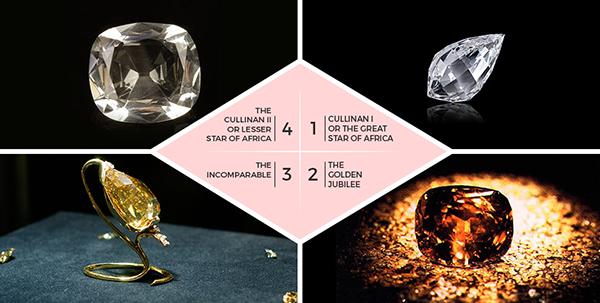
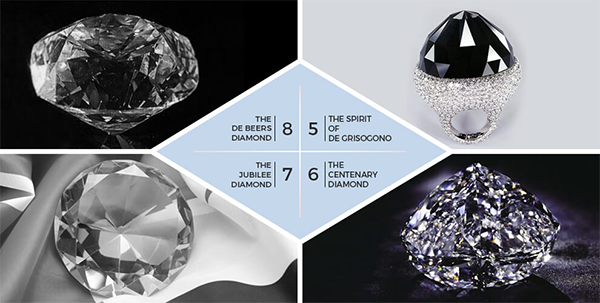
Hard Fact: There are many large stones that have been exceptional and that have unfortunately disappeared from the public domain. In most cases, this has happened on account of theft.
Interesting Trivia: The diamond industry employs more than 10 million people worldwide and boasts of roughly $100 billion in annual revenue. If we put together the 50 biggest diamonds in the world their value would easily exceed the current annual revenue amount.
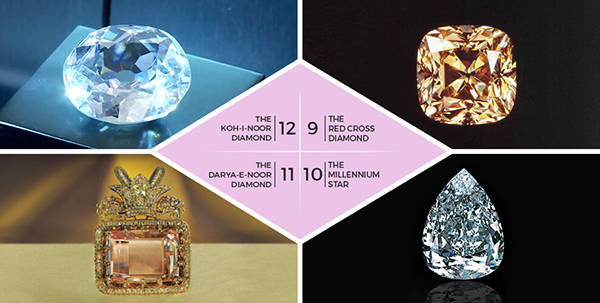
There are of course dozens of other diamonds that would easily fit into this list, but these particular twelve stones mentioned here are some of the biggest, most desirable diamonds ever known to mankind.